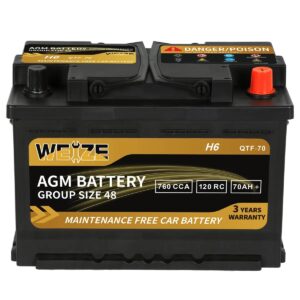If you’ve ever wondered how many cell modules the EQE lithium-ion battery has, you’ve come to the right place. The answer to this burning question lies within the intricate engineering and innovative design of Mercedes-Benz’s latest electric vehicle. But before we delve into the specifics of cell module numbers, let’s take a moment to appreciate the remarkable strides that electric vehicles have made in recent years. The automotive industry has been electrified with advancements that continue to shape the way we move, and the EQE’s lithium-ion battery is at the forefront of this electrification revolution. So, let’s uncover the secrets and unveil the mysteries behind the cell modules of the EQE lithium-ion battery.
How Many Cell Modules Does the EQE Lithium-Ion Battery Have?
The EQE lithium-ion battery is an advanced energy storage solution that offers high performance and reliability. It is commonly used in electric vehicles, consumer electronics, and renewable energy systems. One of the key factors that determine the capabilities and characteristics of a lithium-ion battery is the number of cell modules it contains. In this article, we will delve into the details of the EQE lithium-ion battery and discuss how many cell modules it typically has.
Understanding the EQE Lithium-Ion Battery Structure
Before we dive into the specifics of the cell modules, let’s take a brief look at the structure of the EQE lithium-ion battery. The battery is composed of several key components, including cell modules, a battery management system (BMS), and an outer casing. The cell modules are the building blocks of the battery pack, and they are responsible for storing and releasing electrical energy.
The Role of Cell Modules in the EQE Battery
Cell modules are individual units within the EQE lithium-ion battery that consist of several lithium-ion cells connected together. These modules work together in parallel and series configurations to deliver the desired voltage and capacity. Each cell module contains a certain number of lithium-ion cells that store and release electrical energy. The arrangement and number of cell modules in the battery pack vary depending on the specific application and desired performance.
Determining Factors for the Number of Cell Modules
The number of cell modules in the EQE battery is influenced by various factors, including:
1. Capacity requirements: The capacity of a lithium-ion battery is determined by the energy it can store. Higher capacity requirements typically necessitate a larger number of cell modules.
2. Voltage requirements: Different applications require different voltages. The voltage of a lithium-ion battery can be adjusted by connecting multiple cell modules together in series. The number of cell modules in series determines the overall voltage of the battery pack.
3. Form factor: The physical size and shape of the battery pack can limit the number of cell modules it can accommodate. Compact devices may have fewer cell modules due to space constraints.
4. Power output: The power output of a battery pack is closely related to the number and arrangement of cell modules. Higher power requirements often translate to a greater number of cell modules.
The Average Number of Cell Modules in the EQE Battery
While the exact number of cell modules in the EQE lithium-ion battery can vary depending on the specific application and desired performance, there are some typical ranges to consider. On average, the EQE battery may have anywhere from 4 to 16 cell modules within its battery pack. However, it’s important to note that this range is not fixed and can go beyond these figures depending on the requirements of the application.
The number of cell modules in the EQE battery can be determined by analyzing the specifications provided by the manufacturer or consulting the technical documentation. In most cases, manufacturers provide detailed information about the number and arrangement of cell modules to help users understand the capabilities of their battery packs.
The Impact of Cell Modules on Performance
The number of cell modules in the EQE lithium-ion battery directly affects its overall performance. Here are some key considerations:
1. Capacity: More cell modules generally result in a higher capacity, allowing the battery to store more energy and provide longer usage times.
2. Voltage: The number of cell modules in series determines the voltage of the battery pack. Higher voltages are required for certain applications, such as electric vehicles, where more power is needed.
3. Power output: The total power output of the battery pack is influenced by the arrangement and number of cell modules. More cell modules can provide higher power output capabilities.
4. Thermal management: Large battery packs with more cell modules may require additional measures for effective thermal management to prevent overheating. This can be achieved through advanced cooling systems and temperature monitoring.
The EQE lithium-ion battery is an essential power source for various applications, and the number of cell modules it contains plays a crucial role in determining its performance and capabilities. While the average number of cell modules in the EQE battery ranges from 4 to 16, it’s important to consider specific application requirements and consult the manufacturer’s specifications for accurate information. Understanding the significance of cell modules helps users make informed decisions when selecting and utilizing the EQE lithium-ion battery for their specific needs. Whether it’s powering an electric vehicle, a consumer electronic device, or a renewable energy system, the EQE battery’s cell modules are instrumental in delivering reliable and efficient energy storage.
Frequently Asked Questions
How many cell modules does the EQE lithium-ion battery have?
The EQE lithium-ion battery consists of a total of 12 cell modules.
What is the role of these cell modules in the EQE lithium-ion battery?
The cell modules in the EQE lithium-ion battery are responsible for storing and delivering electrical energy to power the vehicle.
Can you provide more details about the cell modules in the EQE lithium-ion battery?
Each cell module in the EQE lithium-ion battery contains multiple individual lithium-ion cells connected in series or parallel to achieve the desired voltage and capacity.
How are the cell modules arranged in the EQE lithium-ion battery?
The cell modules in the EQE lithium-ion battery are arranged in a specific configuration to optimize the overall performance and ensure even distribution of power.
Does the number of cell modules affect the range of the EQE lithium-ion battery?
While the number of cell modules plays a role in determining the overall capacity of the EQE lithium-ion battery, other factors such as efficiency, driving conditions, and vehicle design also influence the range of the battery.
Are the cell modules in the EQE lithium-ion battery replaceable?
Although the EQE lithium-ion battery is designed to be durable and long-lasting, in some cases, individual cell modules can be replaced if necessary, allowing for efficient maintenance of the battery system.
Final Thoughts
The EQE lithium-ion battery consists of multiple cell modules. These cell modules, also known as battery packs, are the building blocks that make up the entire battery system. Each cell module contains a certain number of individual battery cells, which are connected in series or parallel configurations to provide the desired voltage and capacity. The exact number of cell modules in the EQE lithium-ion battery can vary depending on the specific model and design. However, it typically has multiple cell modules, ensuring high-performance and efficient power delivery. With its innovative battery technology, the EQE lithium-ion battery sets new standards in electric vehicle performance and range.


